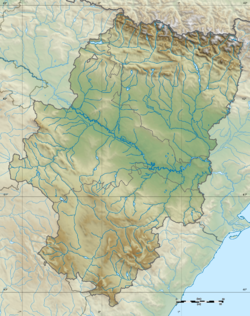| Xert Formation | |
|---|---|
| Stratigraphic range: Late Barremian ~ | |
| Type | Geological formation |
| Underlies | Forcall Formation |
| Overlies | Artoles Formation, Arcillas de Morella Formation |
| Lithology | |
| Primary | Limestone, marl |
| Other | Claystone, chert |
| Location | |
| Coordinates | 40°42′N0°06′E / 40.7°N 0.1°E |
| Approximate paleocoordinates | 30°06′N10°12′E / 30.1°N 10.2°E |
| Region | Aragón |
| Country | Spain |
| Extent | Maestrazgo Basin Galve Basin |
| Type section | |
| Named for | Chert |
The Calizas y margas de Xert Formation or Xert Formation is an Early Cretaceous (late Barremian) geologic formation of the Maestrazgo and Galve Basins in central-eastern Spain. The formation is described as a coastal claystone, with indications of a transgressive episode, marked by the transition from marsh facies, with little marine influence, to marine platform facies evidenced by abundant marine invertebrates. [1]




